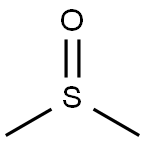Dimethyl chlorothiophosphate
- CAS NO.:2524-03-0
- Empirical Formula: C2H6ClO2PS
- Molecular Weight: 160.56
- MDL number: MFCD00008353
- EINECS: 219-754-9
- SAFETY DATA SHEET (SDS)
- Update Date: 2024-12-18 13:37:16

What is Dimethyl chlorothiophosphate?
Description
Dimethyl chlorothiophosphate is a colorless tolight amber, combustible liquid. Molecularweight= 160.56; Specific Gravity (H2O:1) 1.32 at 25℃;Boiling point = 6667℃ at 16 mmHg; Flashpoint= 104.8℃ (oc). Hazard Identification (based onNFPA-704 M Rating System): Health 3, Flammability 2,Reactivity 2. Insoluble in water.
Chemical properties
clear colorless to light yellow liquid
The Uses of Dimethyl chlorothiophosphate
Dimethyl chlorothiophosphate is used as an intermediate in the manufacture of insecticides, pesticides, fungicides, oil and gasoline additives, plasticizers, corrosion inhibitors, flame-retardants, and flotation agents.
Preparation
Dimethyl chlorothiophosphate is prepared by reaction of phosphorus pentasulfide & methyl alcohol followed by reaction of the resulting dimethyl phosphorodithioate with chlorine.
General Description
Dimethyl chlorothiophosphate is a colorless to light amber liquid. Used as a chemical intermediate for insecticides, pesticides, and fungicides; oil and gasoline additives; plasticizers; corrosion inhibitors; flame retardants; and flotation agents. Not registered as a pesticide in the U.S. (EPA, 1998)
Reactivity Profile
Organothiophosphates, such as Dimethyl chlorothiophosphate, are susceptible to formation of highly toxic and flammable phosphine gas in the presence of strong reducing agents such as hydrides. Partial oxidation by oxidizing agents may result in the release of toxic phosphorus oxides.
Health Hazard
Dimethyl chlorothiophosphate is a strong irritant to the eyes, skin, and mucous membranes.
Fire Hazard
Dimethyl chlorothiophosphate may burn but does not ignite readily. Dimethyl chlorothiophosphate may ignite combustibles (wood, paper, oil, etc.). When heated Dimethyl chlorothiophosphate emits very toxic fumes of chlorine containing compounds, phosphorus oxides, and sulfur oxides.
Flammability and Explosibility
Non flammable
Safety Profile
Poison by inhalation. Moderately toxic by ingestion and skin contact. Corrosive. When heated to decomposition it emits very toxic fumes of Cl-, POx, and SOx
Potential Exposure
This material is used as a chemicalintermediate for insecticides, pesticides, and fungicides; oiland gasoline additives; plasticizers; corrosion inhibitors;flame retardants; and flotation agents. It is not registered asa pesticide in the United States.[EP
First aid
If this chemical gets into the eyes, remove anycontact lenses at once and irrigate immediately for at least15 min, occasionally lifting upper and lower lids. Seek medical attention immediately. If this chemical contacts theskin, remove contaminated clothing and wash immediatelywith soap and water. Seek medical attention immediately. Ifthis chemical has been inhaled, remove from exposure,begin rescue breathing (using universal precautions, including resuscitation mask) if breathing has stopped and CPR ifheart action has stopped. Transfer promptly to a medical
storage
Color Code—Blue: Health Hazard/Poison: Storein a secure poison location. Prior to working with thischemical you should be trained on its proper handling andstorage. Store in tightly closed containers in a cool, wellventilated area. Metal containers involving the transfer ofthis chemical should be grounded and bonded. Where possible, automatically pump liquid from drums or other storagecontainers to process containers. Drums must be equippedwith self-closing valves, pressure vacuum bungs, and flamearresters. Sources of ignition, such as smoking and openflames, are prohibited where this chemical is used, handled,or stored in a manner that could create a potential fire orexplosion hazard. Wherever this chemical is used, handled,manufactured, or stored, use explosion-proof electricalequipment and fittings.
Shipping
Dimethyl thiophosphoryl chloride requires ashipping label of “POISONOUS/TOXIC MATERIALS/CORROSIVE.” This compound falls in DOT Hazard Class6.1 and Packing Group II.
Incompatibilities
Contact with oxidizers may cause therelease of phosphorous oxides. Contact with strong reducingagents, such as hydrides, may cause the formation of flammable and toxic phosphine gas.
Properties of Dimethyl chlorothiophosphate
| Boiling point: | 66-67 °C16 mm Hg(lit.) |
| Density | 1.322 g/mL at 25 °C(lit.) |
| vapor pressure | 0.67 psi ( 20 °C) |
| refractive index | n |
| Flash point: | 221 °F |
| solubility | Chloroform (Sparingly), Methanol (Slightly) |
| form | Oil |
| color | Colourless |
| Water Solubility | slowly hydrolyzes |
| Stability: | Moisture Sensitive |
| CAS DataBase Reference | 2524-03-0(CAS DataBase Reference) |
| NIST Chemistry Reference | Phosphorochloridothioic acid, o,o-dimethyl ester(2524-03-0) |
| EPA Substance Registry System | Dimethyl chlorothiophosphate (2524-03-0) |
Safety information for Dimethyl chlorothiophosphate
Computed Descriptors for Dimethyl chlorothiophosphate
Dimethyl chlorothiophosphate manufacturer
G C Int'L
New Products
(S)-3-Aminobutanenitrile hydrochloride 4-Methylphenylacetic acid N-Boc-D-alaninol N-BOC-D/L-ALANINOL Tert-butyl bis(2-chloroethyl)carbamate 3-Morpholino-1-(4-nitrophenyl)-5,6-dihydropyridin- 2(1H)-one Furan-2,5-Dicarboxylic Acid Tropic acid 1-Bromo-3,5-Di-Tert-Butylbenzene S-2-CHLORO PROPIONIC ACID ETHYL ISOCYANOACETATE 2-Bromo-1,3-Bis(Dimethylamino)Trimethinium Hexafluorophosphate 4-IODO BENZOIC ACID 3-NITRO-2-METHYL ANILINE 1-(2,4-DICHLOROPHENYL) ETHANAMINE (2-Hydroxyphenyl)acetonitrile 4-Bromopyrazole 2-(Cyanocyclohexyl)acetic acid 4-methoxy-3,5-dinitropyridine 1-(4-(aminomethyl)benzyl)urea hydrochloride 2-aminopropyl benzoate hydrochloride diethyl 2-(2-((tertbutoxycarbonyl)amino) ethyl)malonate tert-butyl 4- (ureidomethyl)benzylcarbamate Ethyl-2-chloro((4-methoxyphenyl)hydrazono)acetateRelated products of tetrahydrofuran








You may like
-
 2033-24-1 98%View Details
2033-24-1 98%View Details
2033-24-1 -
 42831-50-5 5-METHYLISOXAZOLE-4-CARBOXYLIC ACID 98%View Details
42831-50-5 5-METHYLISOXAZOLE-4-CARBOXYLIC ACID 98%View Details
42831-50-5 -
 1975-50-4 98%View Details
1975-50-4 98%View Details
1975-50-4 -
 2-HYDROXY BENZYL ALCOHOL 98%View Details
2-HYDROXY BENZYL ALCOHOL 98%View Details
90-01-7 -
 2-Chloro-1,3-Bis(Dimethylamino)Trimethinium Hexafluorophosphate 221615-75-4 98%View Details
2-Chloro-1,3-Bis(Dimethylamino)Trimethinium Hexafluorophosphate 221615-75-4 98%View Details
221615-75-4 -
 61397-56-6 CIS BROMO BENZOATE 98%View Details
61397-56-6 CIS BROMO BENZOATE 98%View Details
61397-56-6 -
 14714-50-2 (2-Hydroxyphenyl)acetonitrile 98+View Details
14714-50-2 (2-Hydroxyphenyl)acetonitrile 98+View Details
14714-50-2 -
 118753-70-1 98+View Details
118753-70-1 98+View Details
118753-70-1